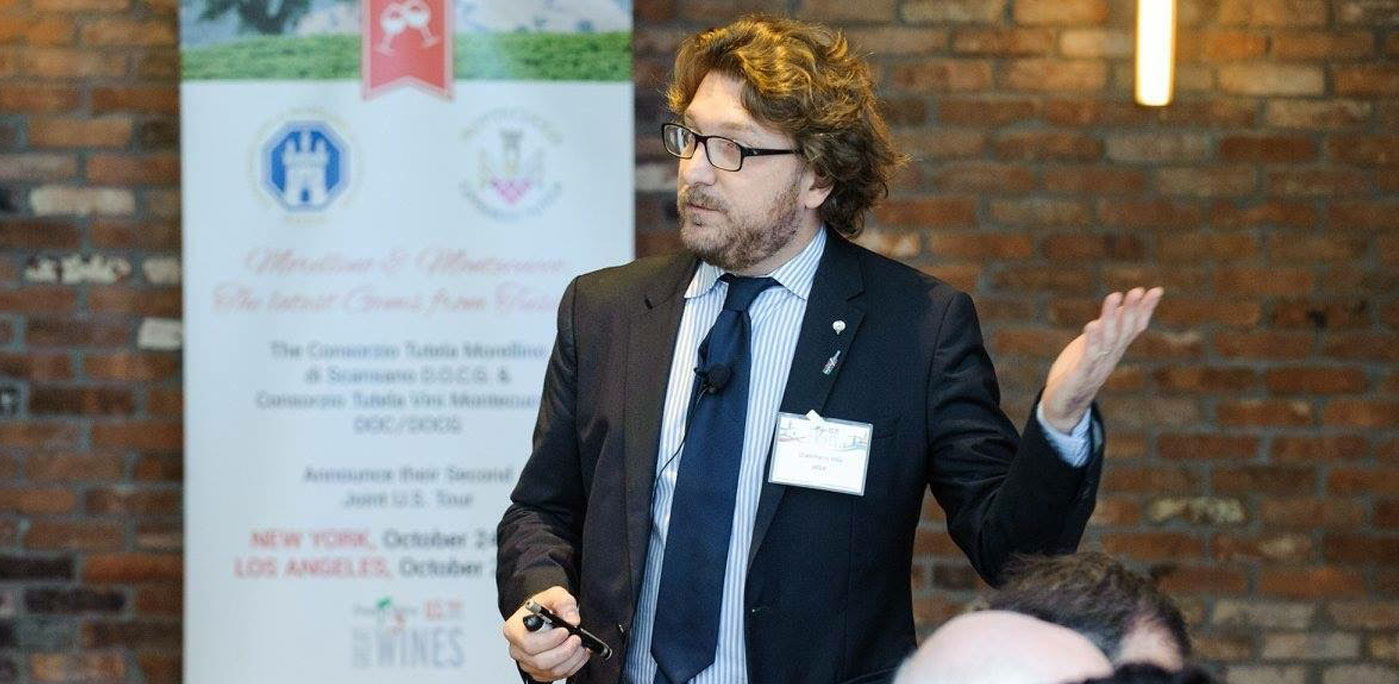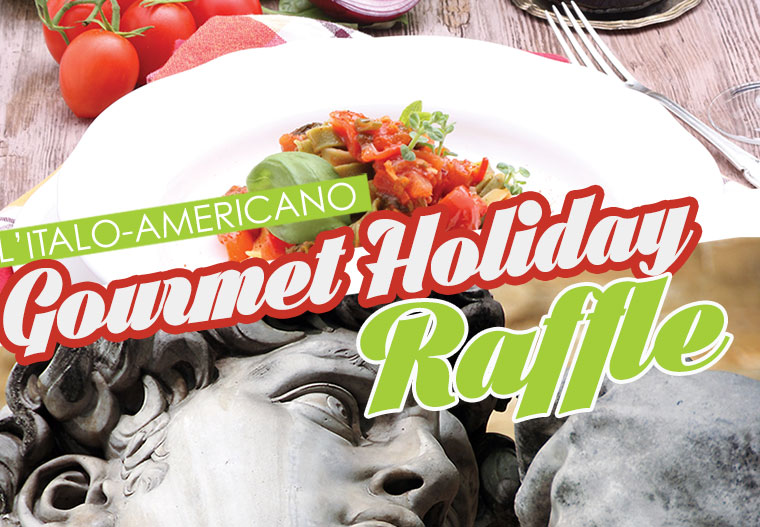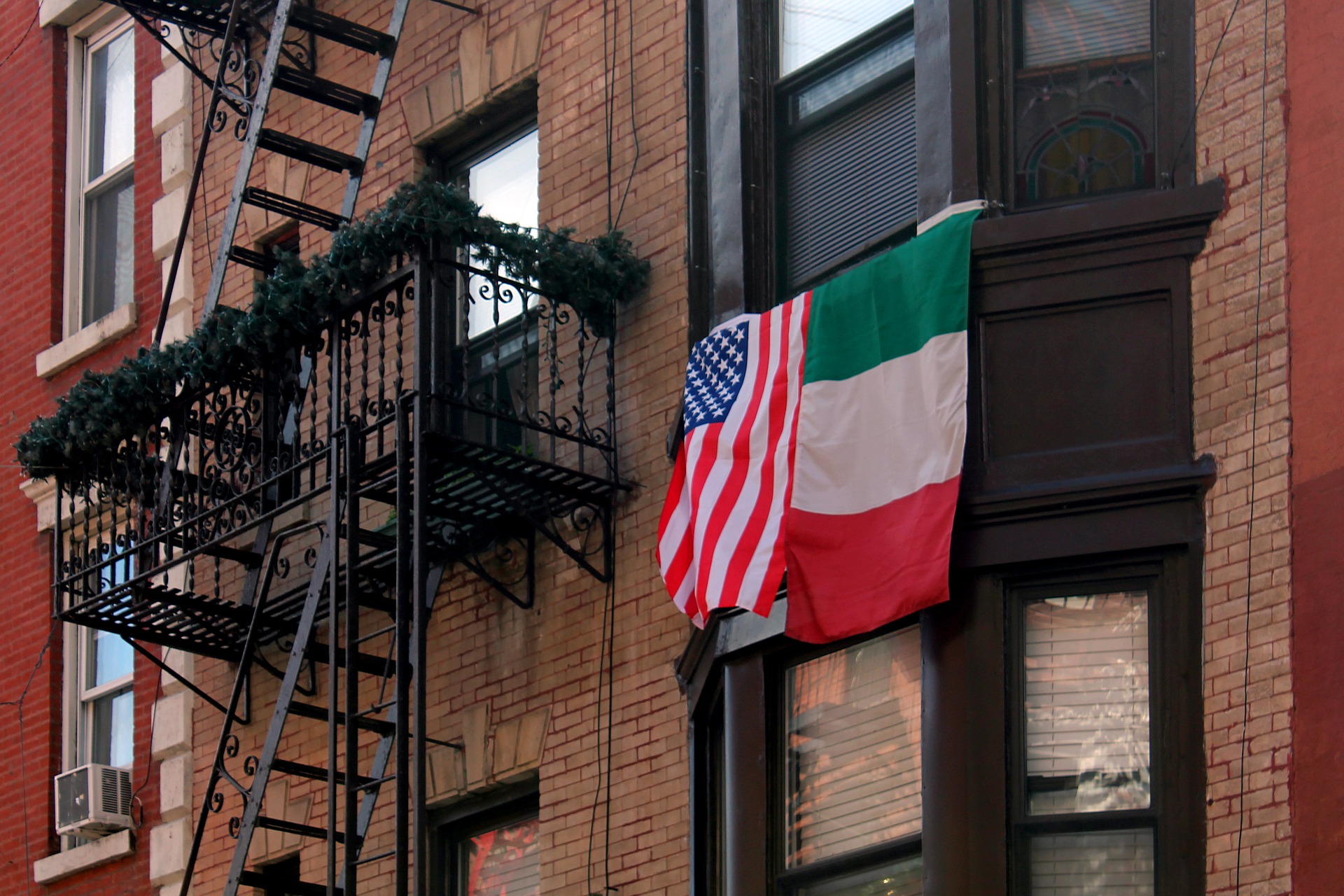On November 30th, it took place, at the Italian Cultural Institute in L.A., a round table discussion about food sustainability in the greater Los Angeles area.
Alongside the IIC, the panel was made possible thanks to the following organizations, Italian American Chamber of Commerce West (IACCW), Slow Food Los Angeles, Santa Monica Office of Sustainability and the Environment, Santa Monica Farmers Market, Barilla Center for Food and Nutrition, Los Angeles Food Policy Council and Vinomatica.com.
The list of collaborators to the evening is long and that testifies how much the topic matters today in a region like Southern California, where the drought parches the land and masse of homeless people starve, while the children of the wealthy suffer from obesity.
Moderator of the evening was Ernest Miller, chef, educator, consultant, speaker and co-leader of Slow Food Los Angeles, whose mission is to create dramatic and lasting change in the food system.
As its manifesto recites: “We are enslaved by speed and have all succumbed to the same insidious virus: Fast Life, which disrupts our habits, pervades the privacy of our homes, and forces us to eat Fast Foods.”
As shown in the organization’s logo itself, featuring a snail, the solution to this harmful state of things is to reconnect with food slowly, rediscovering the aromas and flavors of healthier food choices.
First at the lectern was Laura Avery, Santa Monica Farmers Market Supervisor, who, since 1982, has been spearheading efforts to promote and provide reasonably priced, high quality produce from local farmers directly to the city’s population, each and every week.
Laura presented the case of the “grain project.” In the eighteen hundreds, 70% of California’s agriculture consisted in wheat. A large share of it was exported to Europe. However, the extensive use of the land, without a proper care for it, eventually took its toll to the quality of the product itself and made the whole industry collapse.
Today, the grass-rooted movement through fundraisers and marketing campaign is trying to bring back the endemic quality of California’s grain to its past splendor.
Behtash Bahador, the Barilla Center for Food & Nutrition Foundation’s Alumni representative in North America, talked about the role of the independent non-profit organization, founded by the Barilla family, in fostering a multidisciplinary dialogue among people from the most various walks of life, with a focus on higher equality in worldwide food production, distribution and consumption.
Frank Garofolo, Culinary Curriculum Development Specialist, who related his past experience as executive chef for a US cruise line. In one of his cooking demonstrations aboard the ship, he showed people how to make pasta. It emerged then, the following predominant attitude, “Let’s substitute one product supposedly healthier for one less healthy, such as margarine for butter, so we can eat larger quantities of food.”
As educator, he noted how this unhealthy trend, prevalent in the Western countries, shall be reversed, starting from what we teach to our kids, for the benefit of our planet and our future generations.
Orietta Gianjorio, certified olive oil, chocolate and honey taster, as well as sommelier, was born in Rome, but now residing in Los Angeles.
She walked us through the contemporary process of producing extra virgin olive oil and the current Californian legislation that guarantees, since 2014, that if an olive oil is defective it cannot be labeled as “extra virgin.”
She also shed some light about recent successful attempts to recycle and reuse waste products, such as olive pits, deriving from the extraction of extra virgin olive oil.
Emily Zipperstein, spokesperson for the Center for Good Food Purchasing, the only one without a food-related background, voiced the very relatable perspective of someone who makes well informed choices in terms of buying healthy food, and works towards making as many people as possible choose well in terms of food purchasing, with a better effect on our health and less harmful impact on our planet.
Last but not least, Giammario Villa, hailing from a family of wine and culinary professionals in Rimini, is now a master taster and wine educator in L.A., as well as President and Founder of Vinomatica, the first detailed and accurate English online catalog dedicated to Italian grape varieties.
I’ve had the chance to hear from him in greater detail about his experiences and his philosophy about food sustainability.
Please, sum up for us your idea of food sustainability.
The idea of sustainability goes side by side with a mentality. It is not a certification or a logo, but rather a state of mind that too often is forgotten and belongs mostly to a state of emergency to face scarcity of food, water and so on. Preventing is less cost-effective and way more ethical than healing or adjusting.
We simply need to act in respect of Mother Nature, waiting for the right product at the right time, buying only the quantity we need at the time we need (waste is also due to too much grocery or cooking), re-using part of the ingredients, or the leftovers, with and for different purposes, etc.
Don’t look for a fruit or a vegetable out of the regular season: it will come from far away, the cost will be high (transportation, exclusivity of the product etc.) and the taste/flavor will be different. “Less and better” it’s the philosophy to keep in mind, from a piece of meat to a delicious fish.
Also, when you can get anything you want anytime you want, the pleasure of waiting and expecting is ruined. We are too spoiled and nothing anymore surprises us. I remember, as a child, when I was waiting anxiously for the beginning of June, so I could taste the first strawberries of the season: crisp, small, not ripe as the ones from July, but yet delicious and the perfect way to announce the summer and the end of the school.
What did you learn from your recent meeting with chef Massimo Bottura?
I had a terrific personal and professional experience working with Chef Massimo Bottura, during the kick off of the “Week of Italian Cuisine in the World”, at the residence of Italy’s Ambassador to the US in Washington D.C., as well as in NYC, during a three-day series of events and seminars dedicated to DOP/IGP products from Emilia Romagna in the wonderful scenario of Eataly DT.
I had the chance to hear from him and his wife Laura the genesis and the evolution of their project, “Food for Soul,” and what they accomplished, by setting up the Refectory Gastromotiva and the Refectory Ambrosiano and feeding hundreds of people re-using the food waste from the Olympics in Rio and the Expo in Milan.
Having the chance to experience the cuisine of the most famous chef in the world is already exceptional; collaborating with him and his team, supervising the wine pairing, taking care of the wine education and the service during the Embassy dinner and the seminars in NYC, have been a true pleasure, a privilege and a chance to raise the bars of my work ethic and my personal growth.
I’d like to mention also another chef I met and worked with in NYC: Igles Corelli, a stellar chef member of the “Chef to Chef” organization and theoretic of the “circular cuisine,” a no-waste approach similar to Bottura’s one, when he decided to make a gelato out of a banana’s peel.
Similarly chef Corelli’s approach re-uses every single part of each ingredient, like the head of a shrimp, blended with sparkling water and extra virgin olive oil, to create an emulsion to cook pasta with, comparable to the consistency of the mayonnaise.. without eggs!
Are you in contact with the local Italian-American community? Are you member of any such organization?
I am not formally involved with any association and I am not officially a member of the Italian-American community, at least not in a “traditional way.”
Being a Wine Educator and delivering a large number of lectures each month at the Italian Cultural Institute, at UCLA, at the Italian Chamber of Commerce, and so on, give me anyway plenty of chances to feel part of and to have an impact on the Italian-American community.
To me, we should reconsider the definition of community, as well as its extension, or its “physical concept.” We don’t necessarily need to have an epicenter, such as a formal location or an headquarter. You can be part of the Italian-American community by visiting a museum highlighting an Italian artist, dining out in a very genuine Italian restaurant, or by simply calling over to your house, Italians, Americans and all the lovers of Italian lifestyle and culture, and appreciate together a meal, a book, a movie or just a party.































